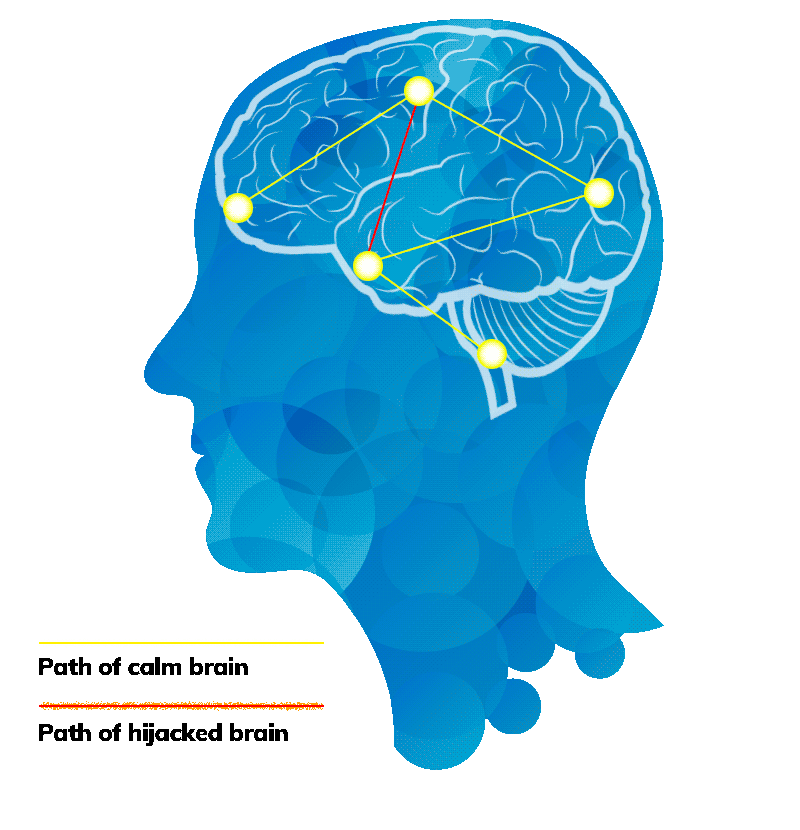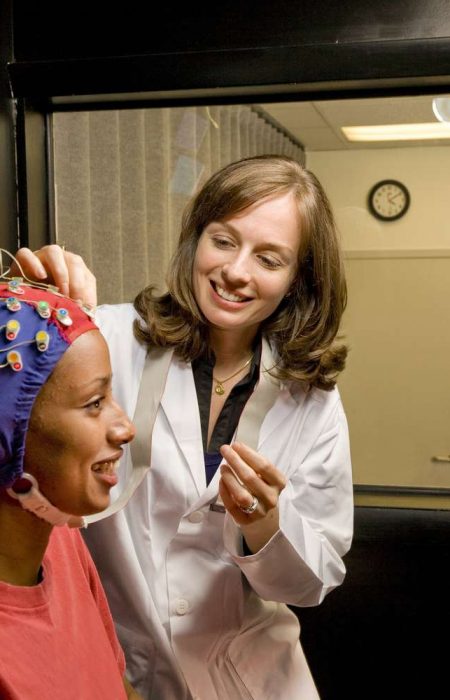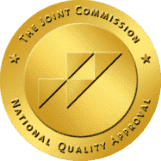What is Neurofeedback Therapy
- Home
- What is Neurofeedback Therapy
What is Neurofeedback Therapy
To understand exactly what is neurofeedback, we must first understand how brainwaves work.
When brain cells communicate with each other, they produce synchronized electrical impulses—which appear as brainwaves. So for any behavior, emotion, or thought that crosses your mind, there is a trail of brainwaves.
Find Help Now
Neurofeedback therapy uses special sensors place on the scalp to measure these brainwaves, which have different frequency bands (measured in cycles/seconds or Hertz). Depending on the specific activity levels, the waves alternate between:
- Delta brainwaves (1 to 4 Hz): These often occur during deep stages of sleep, which includes the restorative stage where the body repairs itself and we’re not aware of our body
- Theta brainwaves (4 to 8 Hz): Remember those times when your mind just wanders off and your senses seem to be withdrawn from the external world? Well, you were likely in a theta brainwave state
- Alpha brainwaves (8 to 12 Hz): Alpha waves are associated with a mindful state of calm and relaxation, such as when a person is meditating or sitting down to rest after completing a task
- Sensori-motor Rhythm (SMR) brainwaves (12 to 15 Hz): This wave pattern is associated with an alert, attentive state like what you’re experiencing right now as you read this post
- Beta brainwaves (15 to 32 Hz): Beta waves are characteristic of a mind that is actively engaged or aroused, such as when you’re actively debating an issue
Think of your brainwaves as musical notes. Higher frequencies are like a high-pitched flute, while lower brainwave frequencies are like a deep drum beat. The different brain frequencies gel together to create a “symphony” that generate your brain activity.
During your typical day-to-day activities, such as class discussions or making a presentation at work, a normal brain should be using the Beta frequency. But when any of the brainwaves are imbalanced, this corresponds to problems with our mental health.
For example, too much activity in certain areas of the brain may manifest as impulsive behavior (as seen in patients with an obsessive-compulsive disorder).
The same applies to people with attentional issues, anxiety, chronic pain, depression, addiction, insomnia, PTSD, stress, or traumatic brain injury – all caused by an imbalance in brainwave activity.
Neurofeedback measures and monitors these frequencies to identify the specific activity that is creating undesirable feelings or abnormal brain function. After accurately mapping out your activity level, we create a plan to help you achieve a healthier mental state. This brings us to the definition of neurofeedback.
Neuro feedback therapy basically works in two steps:
- Assessing brainwave activity
- Training the brain to self-regulate itself
As such, it’s not considered a cure, but instead, it’s a way to regulate manage the brain to help it function in a healthier manner.
Neurotherapy uses EEG sensors to monitor brain activity, and a computer to relay back the feedback. Depending on the circumstances, a trained neurofeedback practitioner may use different stimuli to receive this feedback – including watching a video, listening to music, or playing a game.
This is based on the fact that our brains are malleable or “neuroplastic,” meaning it’s possible to change how they function.
According to a study published in the Journal of Neurochemistry, our brains have the amazing ability to continually adapt to changes in the environment. With this in mind, neurotherapy attempts to stimulate the brain to act more desirably by using “operant conditioning.”
A good example of operant conditioning is when a dog receives a snack every time he rolls over on command. Over time, the canine will learn that rolling leads to snacks – and the chances of responding to such a command in the future will be higher.
Similarly, neurofeedback therapy uses brainwave data and a ‘reward system’ to train the brain.
When you generate desirable brain activity, you’re rewarded with a positive outcome such as gaining points in the video game. But when your brainwaves fire at an undesired frequency, you receive negative feedback such as pausing the music.
In such a case, the brain learns that the particular brain activity is out of balance and it should find a way to get a positive response.
Repeated exposure (approximately 20 to 40 sessions) promotes long-lasting changes in brain activity. Even outside the neuro feedback therapy sessions, your brain will be “conditioned” to operate in an optimal range.
This is just like physical training, where the more you exercise, the closer you get to reaching a more efficient and optimal state.

Mental health and neurological disorders are typically characterized by certain patterns of brain activity.
The goal of neurotherapy is to improve the brain’s ability to smoothly shift between states of arousal and relaxation. It locates specific pathways that are either over-activated, under-activated, or dysregulated.
By modulating the brain’s functions such as Affect regulation, Emotional regulation, and Attention regulation, neurotherapy can help with several neurological issues.
It has shown to be useful for children or adults diagnosed with conditions such as PTSD, anxiety disorders, depression, and addiction, among others.
According to the Diagnostic and Statistical Manual of Mental Disorders (DSM-5), post-traumatic stress disorder (PTSD) is a condition that is associated with “exposure to actual or threatened death, serious injury or sexual violation.”
Children, adolescents, or adults diagnosed with PTSD often re-live the trauma in the form of flashbacks that traumatize them. This causes impairment or distress in an individual’s capacity to function and interact with others.
EEG Biofeedback Therapy– specifically the alpha-theta protocol – helps bring a patient to a state of deep calm where they can access the dislodged memories and release the false beliefs or trauma.
Aside from giving the patient a healthier perspective of life, neurotherapy also makes the brain more receptive to other therapies.
In a study appearing in the Journal of Medical Psychotherapy, the researchers monitored the outcome of alpha-theta brainwave neurofeedback treatment on Vietnam veterans diagnosed with combat-related PTSD.
According to their findings, the level of beta-endorphins (blood stress hormone) decreased throughout the therapy. In the end, PTSD patients who underwent neurotherapy had similar profiles to their counterparts who had never been diagnosed with the disorder.
In a 10-year follow up, only 3 neurofeedback patients had relapsed, compared to 14 among the group that underwent traditional treatment. This shows that neuro feedback therapy is efficacious in treating PTSD and preventing relapse.
According to the World Health Organization (WHO), depression affects over 264 million people around the world, and it’s the leading cause of disability.
Similarly, the Anxiety and Depression Association of America (ADAA) notes that anxiety disorders are the most common mental disorders in the world. With such high prevalence rates, it important to find effective ways to curb the problems.
Similarly, a pilot study in the PloS One peer-reviewed journal concluded that “neurofeedback aimed at a reduction of frontal asymmetry of alpha-activity may be effective as a treatment for depression.”
For anxiety disorders, the team at Iris Healing® can either use alpha-theta, SMR, or beta neurotherapy protocols to address the problem at its source.
For example, if you have reactionary anxiety as seen in people with a phobia, we will use alpha-theta biofeedback.
If you have generalized anxiety – stemming from an over-activated brain – SMR protocols can help slow down the brain. This makes everyday activities (that would have otherwise been distressing) easier to manage.
The effectiveness of neurofeedback treatment for anxiety and depression is supported by a study published in the Journal of Adult Development.
The scientific evidence on the applicability of neurofeedback is also promising for several other mental health problems including:

According to an article published in the Journal of the American Board of Sport Psychology, neurofeedback can also help an athlete achieve peak performance by reducing mental chatter, lowering anxiety, and improving concentration.
Neurofeedback therapy at Iris Healing® is often preceded by a private consultation and assessment with one of our trained experts.
We will begin with a preliminary discussion to understand your needs and what our neurofeedback services can offer to help. This includes a walk-through of our neurotherapy process, the measures we will employ to meet the full extent of your expectations, and an EEG appointment.
In your first appointment, you’ll be asked a set of questions to help develop a fine-tuned therapy protocol that’s tailored to your unique characteristics. The technician will then place sensors on your scalp and ear (don’t worry, they’re non-invasive and won’t hurt).
The session typically takes around 30 minutes, and during that time the provider may change the placement of the sensors. This helps us visualize the baseline of your brain activity and formulate a treatment schedule.
Depending on the therapy protocol, you may receive feedback with your eyes closed or open. When closed, the focus is on auditory feedback. The alpha brain wave frequency typically rises as your mind drifts into a mindful, meditative, and relaxing state.
When your eyes are open, you will watch fractal morphing along with some graphs while focusing on both visual and auditory cues.
To effectively “train the brain,” it’s important to keep it in an active state of learning and growth. For this reason, we will schedule sessions based on the most effective and practical frequency (at least 2 sessions per week).
During a training session, we will evaluate your progress by tracking the presentation of your symptoms and your overall experience. Each session is designed to build on the pervious one in a progressive manner.
Utilizing the Iris Healing® Neurofeedback Program in Los Angeles gives you access to the best medical practices and neurofeedback protocol to optimize the outcome of your recovery for mental health issues and addiction.
Our focus is on holistic healing and recovery. To achieve this, we go beyond the symptoms and instead tackle your problem from its roots. Our program combines different healing modalities to effectively treat your mental health issues and prevent relapses.
Iris Healing® uses the BrainPaint Neurofeedback System, which includes practices and protocols that are customized just for you.
By using a systematic approach and measurable results, we can ensure more consistent outcomes than other providers.
It’s also worth noting that the BrainPaint Neurofeedback System automates the exact alpha-theta implementation that was used to help addiction and PTSD patients in the landmark UCLA study (the largest randomized control study in the field).
Additionally, the software is designed in such a way that you can seamlessly move to or from another treatment center and retain the progress of all your previous protocols.
Frequently Asked Questions
Neurofeedback for ADHD
What is neurofeedback for ADHD? Learn how neurofeedback treatment in Los Angeles can benefit patients experiencing ADHD and other mental health disorders.

Article Contents
What is ADHD?
ADHD, or attention deficit hyperactivity disorder, is a pervasive neurodevelopmental disorder that is typically diagnosed during early childhood.
Find Help Now
Symptoms of ADHD
The most common signs of ADHD are inattentiveness, hyperactivity, and low impulse control. Depending on the severity of the ADHD, the condition can cause significant problems in a person’s social life, school and work life, and romantic life if left untreated.1
Types of ADHD
There are three recognized types of ADHD, and each one exhibits different symptoms. These include:
- Predominantly inattentive presentation: More commonly found in girls, this type of ADHD manifests as an inability to finish tasks, being frequently forgetful, and having difficulty following directions. This type has been traditionally harder to diagnose due to the stigma surrounding ADHD.
- Predominantly hyperactive-impulsive presentation: More commonly found in boys, this type of ADHD manifests as an inability to sit still, constant restlessness, low impulse control, difficulty waiting their turn, and frequently interrupting.
- Combined presentation: The patient has some symptoms of both above types.
Effects of ADHD
ADHD, when left untreated, can cause problems focusing on school, work, and home life. This can cause people with ADHD to get bad grades, frequently get into trouble, or not understand some concepts they are being taught.
In later life, this translates to difficulty meeting deadlines at work, being reprimanded or fired for tardiness, etc. It can also cause problems in relationships due to inattentiveness and the inability to listen well.
Potential Treatments
Cognitive-behavioral therapy and medication are the most common treatment options for patients with ADHD. For more severe cases of ADHD, where medication and therapy do not seem to be helping, ADHD neurofeedback therapy may be prescribed.
Changing certain aspects of their lives may be beneficial for people with ADHD. For example, those with ADHD often benefit from having a strict, structured schedule and usually function better when they have a routine that they can follow.2
Background of Neurofeedback
Called EEG biofeedback initially, neurofeedback is a specific type of therapy that has been used to treat the symptoms of ADHD since the late 1950s. In 1920, a German psychiatrist by the name of Hans Berger created the first EEG machine.
Using the research that he discovered and his designs as a starting point for their work, Dr. Joseph Kamiya and Dr. Barry Sterman worked separately but simultaneously to create what would become known as EEG biofeedback therapy.
They discovered that when rewards, such as ringing a bell, were offered during specific brainwave activity, that activity could be trained to be repeated. The idea was not complex: train the brain by using physiological limits as feedback. Dr. Sterman would also apply this same training to people with epilepsy, and he was able to reduce the rate of their seizures by 20-100%. Outcomes include increased focus and brain resiliency as well as decreased stress.3

Neurofeedback for ADHD
EEG Biofeedback, or neurofeedback, is a treatment option for ADHD that attempts to train the brain into a calmer state by providing some form of reward for normalized brain waves.
It is believed that by slowly training the brain to react to the positive stimuli over time, the brain will learn to reduce or avoid harmful brain activity.
What Is Neurofeedback for ADHD?
Once known as EEG Biofeedback, ADHD neurofeedback is a process that begins with the therapist attaching electrodes to the patient’s head to measure brainwaves. These electrodes do not provide any electrical current, and they do not do anything to alter the patient’s brain waves directly.
Instead, while they measure the patient’s brainwaves, the EEG completes a brain map that determines what the brain’s activity looks like before treatment. From here, the patient will be asked to watch a movie, play a video game, or perform some other stimulating tasks.
When the EEG shows that the patient is concentrating, a reward sound, such as a bell, will sound to let them know that they are focusing correctly. When they start to lose concentration, the screen may waver or darken until their attention is refocused.
Eventually, the brain will begin to train itself to actively concentrate on tasks rather than getting distracted, which can help relieve ADHD symptoms.4
Does Neurofeedback work for ADHD?
Research is still being conducted on the effectiveness of neurofeedback treatment for ADHD. While some studies have suggested that beginning neurofeedback therapy in childhood has shown efficacy in reducing the symptoms of ADHD, other studies have shown that the effect may only be temporary.
More studies need to be completed to determine the effectiveness of neurofeedback for ADHD truly.5
Is It Safe to Use Neurofeedback for ADHD?
Neurofeedback therapy is believed to be completely safe. It is entirely non-invasive, and there is nothing done explicitly to a patient’s brain to force it to modify itself. It works by using outside stimuli to gently influence the brain via a reward system.
Neurofeedback Therapy Side Effects
While most patients won’t feel any side effects, some may experience neurotherapy side effects. These neurotherapy side effects are generally mild and only last briefly. They include:6
- Mental fatigue
- Vivid dreams and emotions
- Dizziness, nausea, and light sensitivity (particularly in those that had previous head trauma)
How Much Does Neurofeedback for ADHD Cost?
Neurofeedback therapy for ADHD can be expensive, costing $2,200 per session. Patients should discuss other treatment options with their providers before seeking neurotherapy, and they should talk to their insurance provider to determine coverage.
How Many Neurofeedback Sessions for ADHD?
Neurofeedback training for ADHD typically takes up to 24 sessions to work. These sessions are twice a week over 12 weeks with each session lasting 45 minutes.
Neurofeedback and Other Mental Health Therapies at Iris Healing®
For some patients with ADHD, medication and behavioral therapy do not work. This can be especially true for patients with a dual diagnosis or those struggling with substance addiction and ADHD.
For these patients, neurotherapy may be effective. At Iris Healing®, we believe in using holistic and compassionate care to help our patients overcome the symptoms of their conditions.
Is Neurofeedback Covered by Insurance?
There is no guarantee that your insurance provider will cover neurotherapy treatment. It is recommended that patients discuss their symptoms and other treatment options with their medical provider or therapist to determine their best option.
Patients should check with their insurance provider to determine eligibility, coverage, and any out-of-pocket cost that they may have to pay.
Other Treatment Programs
Neurofeedback therapy is not the only treatment for ADHD. Besides neurofeedback therapy, cognitive behavioral therapy and medication are frequently beneficial and effective in treating most people with ADHD.
Getting Help
Reach out to our team today to learn how Iris Healing® can help you manage your ADHD symptoms and discuss your treatment options.
Resources
- https://www.cdc.gov/ncbddd/adhd/facts.html
- https://www.psychiatry.org/patients-families/adhd/what-is-adhd
- https://neurogrow.com/neurofeedback-complete-guide/
- https://www.webmd.com/add-adhd/childhood-adhd/features/neurofeedback-adhd
- https://chadd.org/about-adhd/neurofeedback-eeg-biofeedback/#:~:text=Neurofeedback%2C%20formerly%20called%20electroencephalographic%20(EEG,and%20deficit%20of%20beta%20waves.
- https://www.medicalnewstoday.com/articles/315261#is-it-safe




